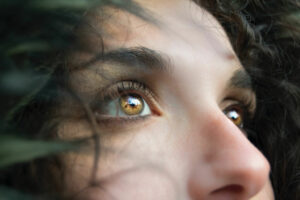
Many of us have grown up with the belief that blood without oxygen is blue. After all, when we look at our veins, they often appear bluish, and it’s common knowledge that blood returning to the lungs lacks oxygen. But is this widely held belief true?
The common misconception about blood is that it turns blue when it lacks oxygen. Some proponents of this myth argue that blood immediately turns red upon exposure to oxygen, like when a cut occurs. While it’s true that blood drawn from veins, which are not exposed to air, appears dark red, this shouldn’t lead us astray from understanding the truth.
When blood lacks oxygen, it simply turns a dark red color, much like the blood drawn during a donation. The reddish hue is a result of a complex interaction involving hemoglobin, a protein responsible for carrying oxygen throughout the body. Hemoglobin, with its four heme groups, is the primary reason behind blood’s red color.
So, why do veins sometimes look blue through the skin? It turns out that the proximity of veins to the skin’s surface makes them appear blue when, in reality, the blood flowing through them is deep red. This optical illusion happens because of how light interacts with human skin.
Subcutaneous fat absorbs low-frequency light, creating the illusion of blue veins. The longer wavelengths of blue and violet light can pass through the skin, while shorter wavelengths are absorbed by melanin, the skin’s pigment. When the skin is removed, such as during a cadaver dissection, veins and arteries exhibit a similar color.
People with medium-toned skin often observe blue veins, but those with deeper or lighter skin tones may not see the same effect. Instead, the veins might appear brownish or greenish. Exceptional cases, like individuals with very light skin, may have veins that appear dark purple or red due to the color of the blood they carry.
You might have seen someone with purple lips or fingertips when they’re choking. This phenomenon occurs because light diffuses differently through their tissues, causing the blood to become extremely dark crimson. In some cases, it can even appear dark blue or purple when reflecting off the skin, especially around the lips and fingernails.
Blood is a vital component of our bodies, serving various essential functions, including supplying oxygen and nutrients to cells while removing waste products. Plasma, which constitutes about 55% of blood fluid, plays a crucial role in carrying out these functions.
An average adult carries around 1.3 gallons (5 liters) of blood at all times, accounting for about 8% of their body weight. Blood density is close to that of water, at approximately 1060 kg/m³.
Contrary to popular belief, it’s not iron that’s responsible for the reddening of blood. The true culprit is the porphyrin component of hemoglobin. Porphyrins are a class of organic molecules, and heme, found in red blood cells, acts as a cofactor for hemoglobin. Within heme, an iron atom resides at the center of a heterocyclic organic ring. Interestingly, the word “porphyrin” is derived from the Greek word meaning “purple,” hinting at its role in the coloration of blood.
In the realm of organic chemistry, a functional group can go by multiple names, one of which is a “moiety.” This term might be less familiar, but it’s important in understanding the intricate composition of hemoglobin and its role in blood coloration.
Blood Facts
- While the ABO and Rh blood group systems are widely known, there are over 30 other blood group systems with numerous rare blood types. For example, the Bombay blood group is extremely rare, with fewer than 20 individuals known to have it worldwide.
- Not all blood in the body follows the same route. Deoxygenated blood from the body returns to the right atrium of the heart through the superior and inferior vena cava, while oxygenated blood from the lungs enters the left atrium through the pulmonary veins.
- Blood plays a crucial role in maintaining the body’s pH balance. It typically has a pH of around 7.35 to 7.45, which is slightly alkaline. Buffers in the blood help prevent drastic changes in pH, which could be harmful.
- The skin is the body’s largest organ and contains an extensive network of blood vessels. If you were to stretch out all the blood vessels in your body, they would cover an impressive distance—approximately 60,000 miles!
- Most blood cells are produced in the bone marrow, specifically in the spongy tissue found in the center of large bones, such as the femur and hip bones. This process is known as hematopoiesis.
- Blood vessels are not rigid tubes but dynamic structures. They can constrict (vasoconstriction) or dilate (vasodilation) in response to various signals to regulate blood flow and pressure throughout the body.
- Platelets, tiny cell fragments in the blood, are crucial for blood clotting. They help seal injuries to blood vessels and prevent excessive bleeding. Platelet disorders can lead to bleeding disorders.
- It takes approximately 20 seconds for a red blood cell to complete a full circuit through the body, starting and ending in the heart. This means that in one minute, your blood travels about three times the length of your body.
- Each blood donation can save multiple lives. Blood can be separated into its components—red blood cells, plasma, and platelets—making it possible to help different patients with various medical conditions.
- Blood has a distinct metallic odor, often described as iron-like. This scent comes from the iron present in hemoglobin, the protein responsible for carrying oxygen in red blood cells. Some people are more sensitive to this smell than others.
Oxygenation and the Red Transformation
Hemoglobin, the superhero of our circulatory system, plays a pivotal role in the ever-changing colors of our blood. Each hemoglobin molecule boasts a protein partner called heme, which contains the all-important iron. This iron is the key player in the captivating transformation of blood from blue to red.
When oxygen enters the scene, it initiates a chemical reaction with the iron in the heme. This interaction results in the iron turning red, and voilà, our blood takes on its signature crimson hue. It’s like a molecular performance, choreographed by oxygen and starring the iron in heme.
The misconception that blood in our veins is naturally blue is a pervasive myth. While our veins may appear bluish through the skin, human blood is never naturally blue. This illusion is caused by several factors, including the way light interacts with our tissues and the characteristics of deoxygenated blood.
Different Shades of Blood
Blood color can vary not only between oxygenated and deoxygenated states but also within individuals. For instance, some may notice their blood appearing darker in certain circumstances. This can happen for a variety of reasons, including changes in blood thickness and composition.
The Influence of Oxygen Levels
The oxygen content in our blood can affect its coloration. Blood with higher oxygen levels, known as oxygenated blood, has a brighter red color. In contrast, blood with lower oxygen levels, or deoxygenated blood, appears darker. This distinction in color is more pronounced when observed under certain conditions, such as during medical procedures.
Deoxygenated Blood Is A Darker Shade
Deoxygenated blood tends to be darker primarily because of the altered shape of red blood cells when oxygen isn’t bound to hemoglobin. This change in shape, along with the specific properties of deoxygenated hemoglobin, contributes to the blood’s dark red appearance.
While blood may appear blue through our skin due to the way light interacts with our tissues, it is not inherently blue. The coloration of blood is a fascinating interplay of various factors, with oxygen levels and hemoglobin being the primary determinants. Understanding the science behind this myth helps us appreciate the complexity of our circulatory system and the marvel of the human body.



